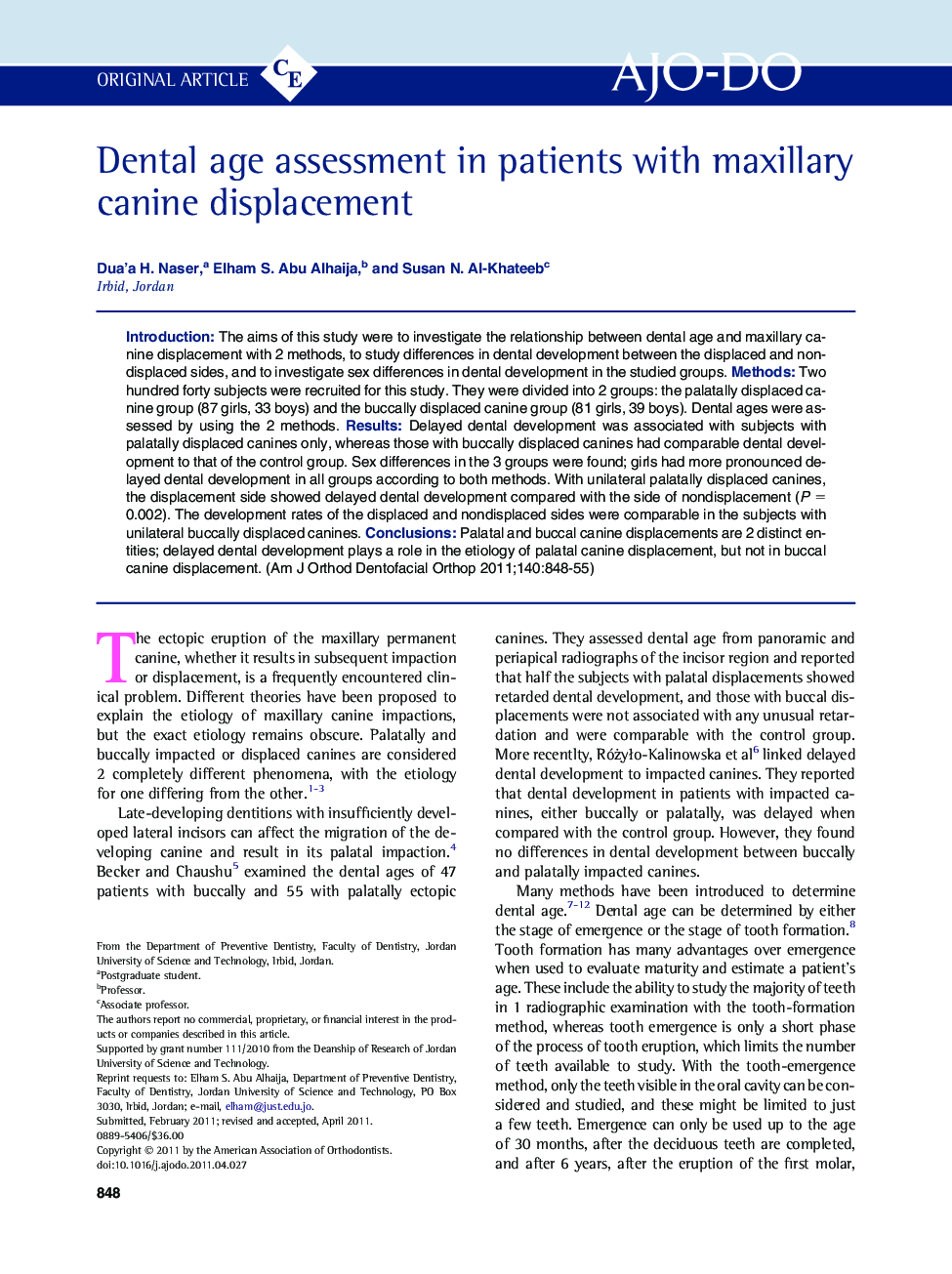| Article ID | Journal | Published Year | Pages | File Type |
|---|---|---|---|---|
| 3117175 | American Journal of Orthodontics and Dentofacial Orthopedics | 2011 | 8 Pages |
IntroductionThe aims of this study were to investigate the relationship between dental age and maxillary canine displacement with 2 methods, to study differences in dental development between the displaced and nondisplaced sides, and to investigate sex differences in dental development in the studied groups.MethodsTwo hundred forty subjects were recruited for this study. They were divided into 2 groups: the palatally displaced canine group (87 girls, 33 boys) and the buccally displaced canine group (81 girls, 39 boys). Dental ages were assessed by using the 2 methods.ResultsDelayed dental development was associated with subjects with palatally displaced canines only, whereas those with buccally displaced canines had comparable dental development to that of the control group. Sex differences in the 3 groups were found; girls had more pronounced delayed dental development in all groups according to both methods. With unilateral palatally displaced canines, the displacement side showed delayed dental development compared with the side of nondisplacement (P = 0.002). The development rates of the displaced and nondisplaced sides were comparable in the subjects with unilateral buccally displaced canines.ConclusionsPalatal and buccal canine displacements are 2 distinct entities; delayed dental development plays a role in the etiology of palatal canine displacement, but not in buccal canine displacement.
